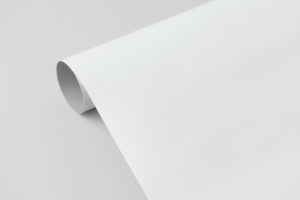If you’ve ever been on a quest for the right paper for your art projects, you know how overwhelming it can be. With so many choices, where do you even start? By considering certain elements such as your unique preferences you can limit the number of possibilities.
This guide highlights tips that are sure to help you find the ideal cartridge paper based on both mediums and types of projects. Once you get the hang of understanding texture, acid content, and sizes in sheets or blocks, evaluating papers will be no problem at all. Following these guidelines can relieve the stress of deciding.
So whether browsing local shops or online stores, let these tips be your compass to discovering a cartridge paper match made for unleashing your artistic vision.
What is Cartridge Paper?
Before diving into selection tips, it helps to understand what cartridge paper is. Known for its durability and versatility, this paper takes its name from the cartridges it originally came packaged in. Cartridge papers are heavy-weight papers weighing around 130-300gsm.
They have smooth or lightly textured surfaces suitable for drawing with pencils, charcoal, and pastels. Some cartridge paper also handles liquid mediums like inks or thin washes of watercolors well. However, the sizing limits how much moisture they can absorb before warping or buckling.
Cartridge paper comes in a variety of colors from rich creams to crisp white shades. You can purchase them pre-packaged in pads, sheets, or cut to size. Due to their heavyweight composition, cartridge papers hold up well to erasing, blending, and repeated applications without damaging the tooth.
For these reasons, cartridge papers have remained a staple choice for illustrations, diagrams, and fine art drafts.
To get a more understanding on how to choose cartridge papers, look at the tips below:
- Consider Your Medium
Because of its smooth or lightly textured surfaces, cartridge paper is a good fit for dry mediums, including graphite, charcoal, and pastels. But in some cases, it could bleed or feather even more with liquid mediums. When using heavy inks or dense watercolor washes, find cartridge papers with more sizing.
To see how various papers behave differently in this respect, you can also carry out tests using your usual instruments. Identifying the medium you usually use helps shorten the list of possible options.
- Test Acid Content
When working with archival pieces, consider the paper’s acid content. Over time, untreated papers will take on a yellow tint as the acids degrade. Look for cartridge papers clearly labeled as acid-free or with neutral pH levels.
And avoid sheets with significant wood pulp, as lignin residues can still discolor them. For long-lasting originals, opt for cartridge papers made with treated plant fibers, cotton, or alpha-cellulose.
- Judge Warping Tendencies
Since cartridge papers contain more sizing than watercolor papers, they stand up better to erasing and blending without damage. However, they also have less ability to reabsorb liquid once saturated. Denser cartridge papers warp less than lighter weights when used with liquid mediums like inks.
However, all grades are prone to buckling if the piece sits in puddles or stained areas. Test different weights with your tools to identify potential warping.
- Consider File Size Options
Cartridge papers come pre-cut into convenient pads or offered in individual sheets. Pads allow easy portability but limit you to a single sheet size, often around letter or A4.
Loose sheets provide more options for selecting custom trim sizes for your artwork. Both have merits depending on your storage, transport, and budget needs. Make sure the available file sizes suit your project requirements.
- Check Available Formats
Cartridge papers also have different formats besides weights and colors. There are those that have bright white pages, and others provide tonalities evoking the old paper. Look for textures, vellum, or hot press finishes that would go well with dry or wet mediums.
More expensive ones will often be made of cotton or alpha-cellulose and will provide better long-term preservation of works. Try using samples of each to see how it might affect your art’s look and longevity.
- Try Before You Buy
Nothing beats hands-on testing with samples. Seek out an art supplier with an assortment of cartridge paper swatches you can try with your tools. Pay attention to how different weights, textures, colors, and coatings perform.
Do soft pastel strokes blend smoothly or feather out? Are dense ink lines crisp, or do they bleed into the grain? Only practice runs let you feel the paper and see how colors, tones, and details appear on various surfaces. This helps narrow choices to papers you work well with creatively and practically.
- Consider Value and Support
Compared to other artistic media, cartridge papers offer excellent versatility and value for most hobby artists and professionals alike. However, budget considerations factor in as well. Consider conservation, framing, or backing board support if needed to preserve your original cartridge paper pieces long-term.
Community art markets, artists’ forums, and manufacturers often support cartridge paper users with technique tutorials, special offers, and demonstration videos to help unleash your creative talents.








